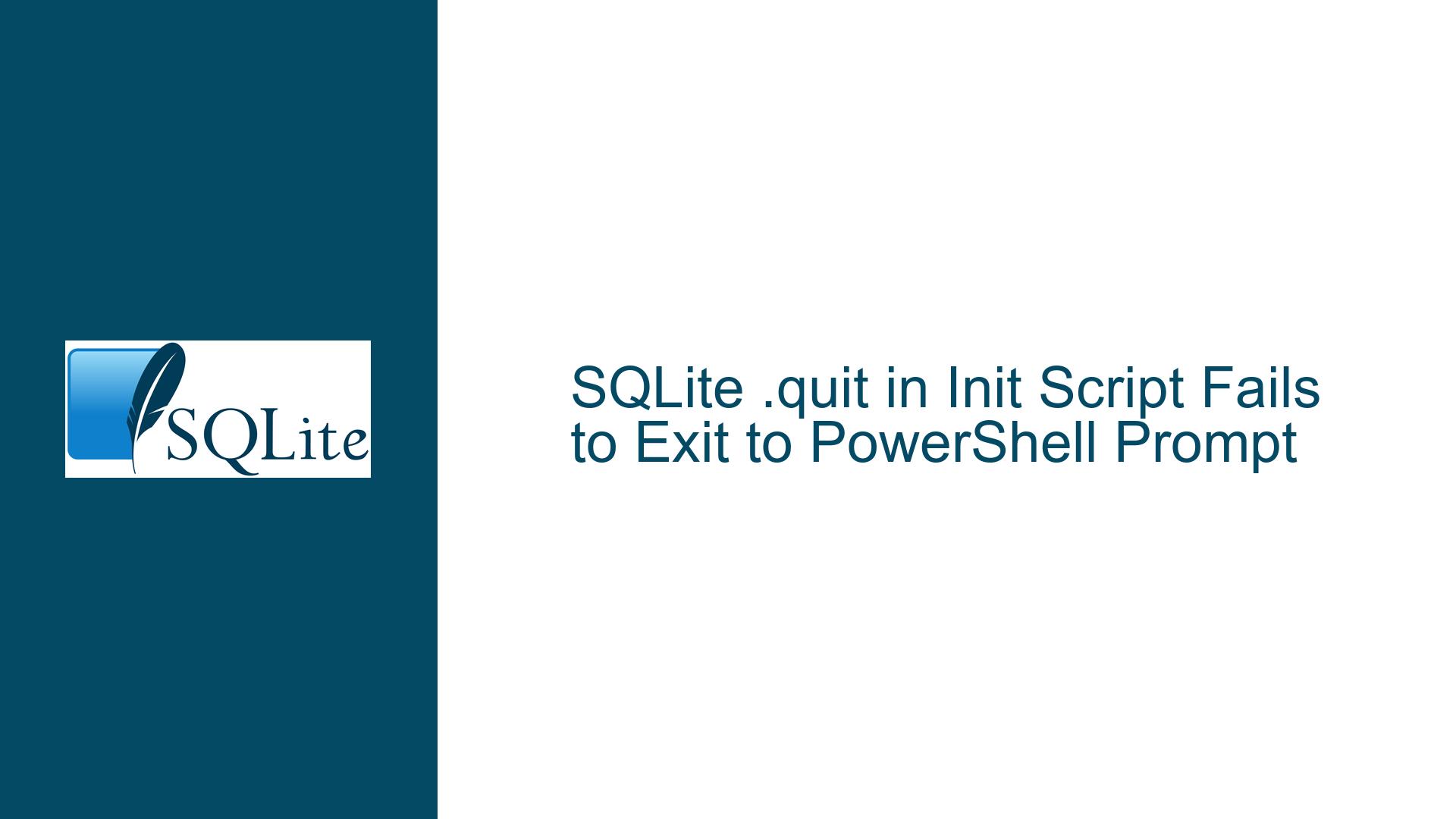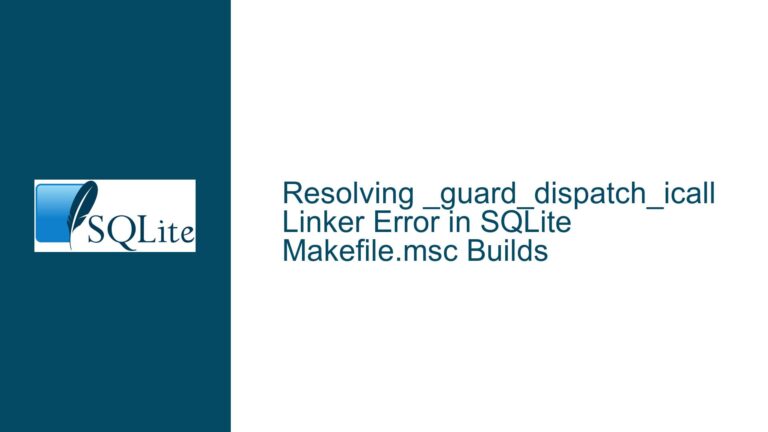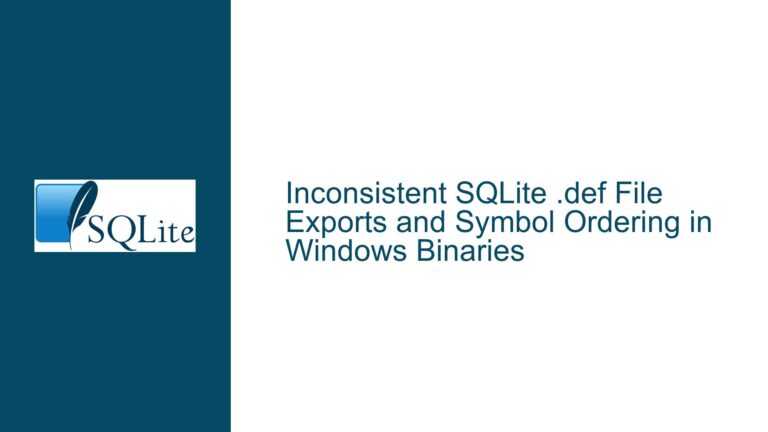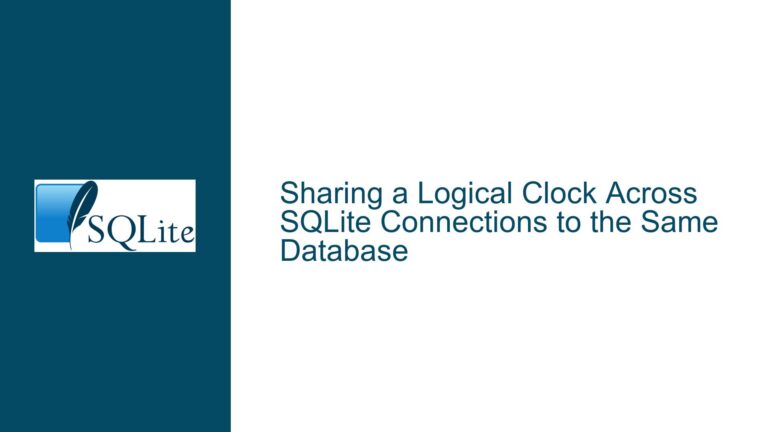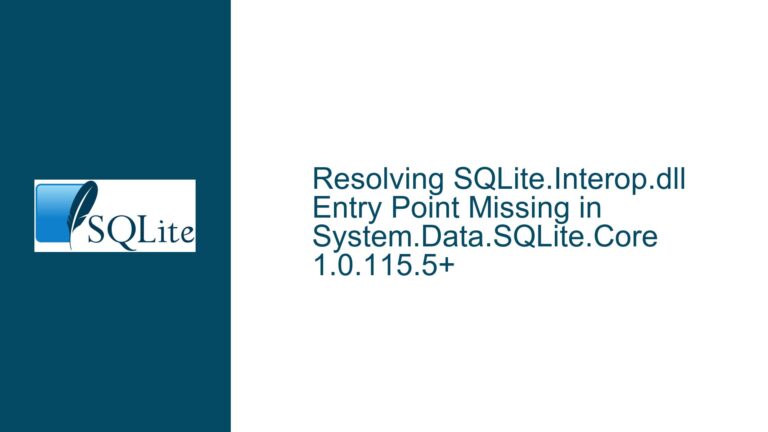SQLite .quit in Init Script Fails to Exit to PowerShell Prompt
Understanding SQLite CLI Input Streams and Exit Behavior in PowerShell
Core Mechanism of SQLite CLI Input Processing
The SQLite command-line interface (CLI) processes input streams differently depending on their source. When executing the sqlite3.exe program with an -init flag, the CLI reads and processes commands from the specified initialization file before entering interactive mode. A common misconception arises when users include the .quit directive in the initialization script, expecting it to terminate the CLI process entirely and return control to the shell (e.g., PowerShell). However, .quit behaves as an input stream terminator, not a process terminator, when used in non-interactive contexts like initialization scripts. This means the CLI will stop processing the current input stream (the init file) but remain active to accept further input, such as interactive commands or additional scripts.
The confusion is compounded by PowerShell’s behavior, which retains focus on the SQLite prompt (sqlite>) after the init script completes. Users expect a return to the PowerShell prompt (PS>) because the .quit command was executed, but the CLI remains active. This is not a PowerShell-specific issue but a fundamental characteristic of how SQLite processes input streams. The .quit command only terminates the current input stream, not the entire CLI session. If the initialization script is the sole input source, the CLI transitions to interactive mode after processing it, unless explicitly instructed otherwise.
To illustrate, consider the following workflow:
- PowerShell executes
sqlite3.exe -init script.sqlite3. - The CLI processes
script.sqlite3, which includes.showand.quit. .showexecutes, displaying runtime configuration..quitterminates processing ofscript.sqlite3but does not exit the CLI.- The CLI, having completed its initialization, waits for interactive input, leaving the user at the
sqlite>prompt.
This behavior aligns with SQLite’s design philosophy: initialization scripts configure the environment for subsequent operations, which may include interactive sessions or additional scripts. Terminating the CLI after initialization would undermine this flexibility.
Input Stream Hierarchy and Command Precedence
SQLite CLI distinguishes between three types of input streams:
- Initialization scripts (via
-init). - Primary input (interactive input or piped/redirected files).
- Nested scripts (via
.read).
Each stream operates within its own context. The .quit command terminates the current input stream and returns control to the parent stream, if one exists. For example:
- In an initialization script,
.quitexits the init script but leaves the CLI running. - In a nested script (executed with
.read),.quitexits the nested script and returns to the caller. - In the primary input stream (interactive mode),
.quitterminates the CLI.
The root cause of the PowerShell issue lies in the hierarchy of input streams. The initialization script is a subordinate stream; exiting it does not propagate termination to the parent process (the CLI itself). Consequently, after processing the init script, the CLI resumes processing the next available input stream—in this case, interactive input.
PowerShell users encounter this behavior because they often conflate stream termination with process termination. The expectation that .quit in an init script should exit the CLI stems from a misunderstanding of how SQLite manages input contexts. Unlike .exit, which unconditionally terminates the CLI process, .quit is context-dependent.
Resolving CLI Process Termination in PowerShell
To force the SQLite CLI to exit after processing an initialization script, use the .exit command instead of .quit. The .exit command terminates the CLI process regardless of the input stream context. Modify the initialization script as follows:
.show
.exit 0
Execute the CLI with:
.\sqlite3.exe -init .\sqlitequit.sqlite3
This ensures the CLI exits after processing the init script, returning control to PowerShell.
Alternative Workarounds:
Use Command-Line Arguments for Single Commands
Avoid initialization scripts entirely by passing commands directly:.\sqlite3.exe ":cmd:.show" ":cmd:.exit"The
:cmd:prefix directs SQLite to execute CLI commands.Pipe Commands into SQLite3.exe
Redirect input from a file or inline script:Get-Content .\sqlitequit.sqlite3 | .\sqlite3.exeWhen the input stream ends, the CLI exits automatically.
Batch File Wrapper
Create a batch file (run_sqlite.bat) to encapsulate execution:@echo off sqlite3.exe -init %1 exit /b 0Execute from PowerShell:
.\run_sqlite.bat .\sqlitequit.sqlite3
Key Considerations:
- The
.exitcommand accepts an optional integer argument (e.g.,.exit 1) to set the process exit code. - Avoid mixing interactive and scripted workflows. If the goal is automation, ensure all commands (including exit) are scripted.
- Test CLI behavior in isolation (e.g., via Command Prompt) to rule out PowerShell-specific anomalies.
By aligning command usage with input stream context, users can reliably control CLI termination in PowerShell and other shells.
This guide systematically addresses the input processing mechanics, contextual command behavior, and practical solutions for SQLite CLI termination in PowerShell. Understanding these principles ensures robust integration of SQLite into automated workflows.
